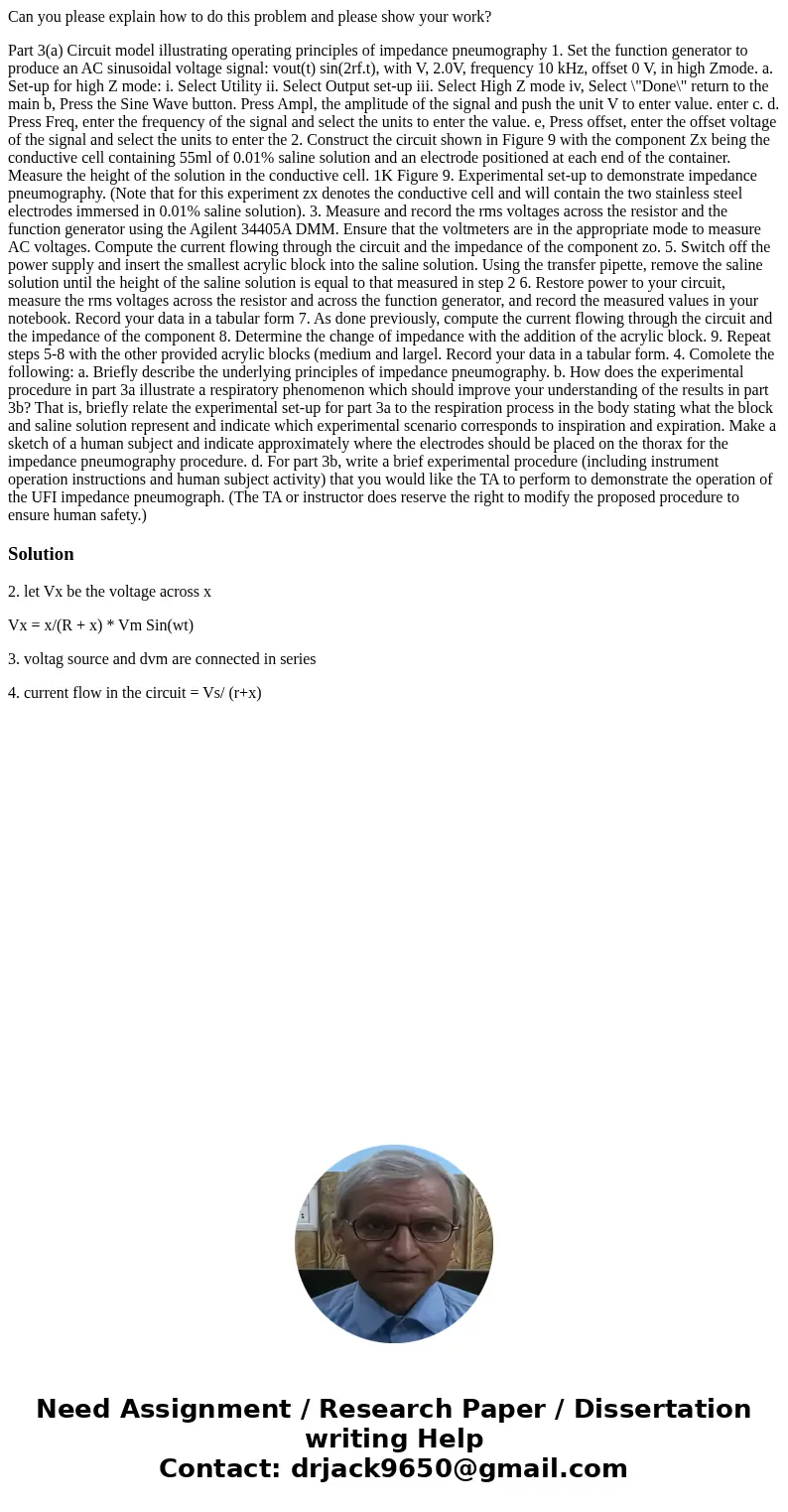Can you please explain how to do this problem and please sho
Can you please explain how to do this problem and please show your work?
Part 3(a) Circuit model illustrating operating principles of impedance pneumography 1. Set the function generator to produce an AC sinusoidal voltage signal: vout(t) sin(2rf.t), with V, 2.0V, frequency 10 kHz, offset 0 V, in high Zmode. a. Set-up for high Z mode: i. Select Utility ii. Select Output set-up iii. Select High Z mode iv, Select \"Done\" return to the main b, Press the Sine Wave button. Press Ampl, the amplitude of the signal and push the unit V to enter value. enter c. d. Press Freq, enter the frequency of the signal and select the units to enter the value. e, Press offset, enter the offset voltage of the signal and select the units to enter the 2. Construct the circuit shown in Figure 9 with the component Zx being the conductive cell containing 55ml of 0.01% saline solution and an electrode positioned at each end of the container. Measure the height of the solution in the conductive cell. 1K Figure 9. Experimental set-up to demonstrate impedance pneumography. (Note that for this experiment zx denotes the conductive cell and will contain the two stainless steel electrodes immersed in 0.01% saline solution). 3. Measure and record the rms voltages across the resistor and the function generator using the Agilent 34405A DMM. Ensure that the voltmeters are in the appropriate mode to measure AC voltages. Compute the current flowing through the circuit and the impedance of the component zo. 5. Switch off the power supply and insert the smallest acrylic block into the saline solution. Using the transfer pipette, remove the saline solution until the height of the saline solution is equal to that measured in step 2 6. Restore power to your circuit, measure the rms voltages across the resistor and across the function generator, and record the measured values in your notebook. Record your data in a tabular form 7. As done previously, compute the current flowing through the circuit and the impedance of the component 8. Determine the change of impedance with the addition of the acrylic block. 9. Repeat steps 5-8 with the other provided acrylic blocks (medium and largel. Record your data in a tabular form. 4. Comolete the following: a. Briefly describe the underlying principles of impedance pneumography. b. How does the experimental procedure in part 3a illustrate a respiratory phenomenon which should improve your understanding of the results in part 3b? That is, briefly relate the experimental set-up for part 3a to the respiration process in the body stating what the block and saline solution represent and indicate which experimental scenario corresponds to inspiration and expiration. Make a sketch of a human subject and indicate approximately where the electrodes should be placed on the thorax for the impedance pneumography procedure. d. For part 3b, write a brief experimental procedure (including instrument operation instructions and human subject activity) that you would like the TA to perform to demonstrate the operation of the UFI impedance pneumograph. (The TA or instructor does reserve the right to modify the proposed procedure to ensure human safety.)Solution
2. let Vx be the voltage across x
Vx = x/(R + x) * Vm Sin(wt)
3. voltag source and dvm are connected in series
4. current flow in the circuit = Vs/ (r+x)

 Homework Sourse
Homework Sourse